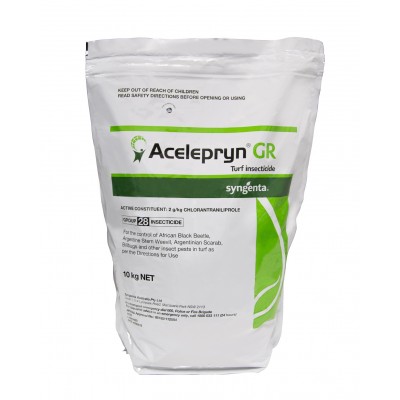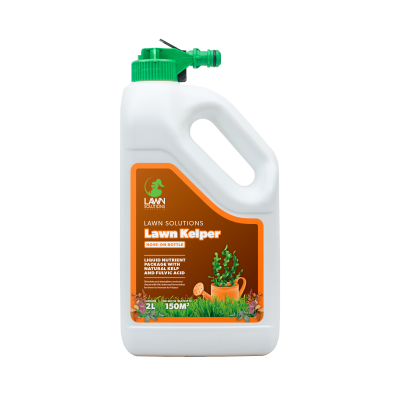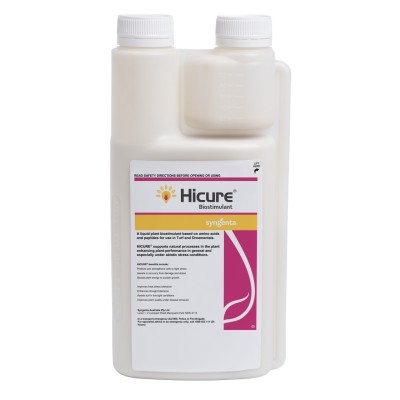How to water your lawn efficiently
Water is fundamental for grass to transport nutrients, maintain cell structure and for it to create its own food through the process of photosynthesis.
For the most part, this water requirement will be met through rainfall or soil moisture storage.
Warm season grasses like buffalo, couch, kikuyu and zoysia, will go into dormancy during hot and dry conditions, conserving energy to maintain plant health. They will then recover and increase leaf growth again when conditions improve. But in some situations, or extended dry spells, the plant may begin to suffer further.
Managing Heat Stress
Here are some signs your lawn may be suffering from heat stress:
- If it’s wilting or losing colour.
- If you walk across your lawn and there is a noticeable footprint left behind, then your lawn is likely to be lacking in water. If it bounces back, your lawn should be well hydrated. This is known as the footprint test.
- In extreme heat, your lawn could take on a blue to grey colouration, before starting to die if left unattended.
- During extended hot weather, if it goes dry and crusty and takes on a light brown colour, there’s a good chance it needs watering.
Dry patches and hydrophobic soil
Because soil doesn’t necessarily hold water evenly, the dry patches or heat stressed turf may present in patches rather than uniformly across the whole lawn.
In many cases this is because the soil in these patches has become hydrophobic and/or compacted. In some cases, a pre-existing fungal problem could also be contributing to the occurrence of hydrophobic soil.
After long periods of dry weather, soils can become dehydrated and this is when the hydrophobic surface is exposed. This surface stops water from penetrating efficiently.
Wetting agents are the solution in this situation. Wetting agents are like a detergent or surfactant that attract water to the soils surface, helping it to soak in and improve infiltration in these areas. This reduces water run-off, encourages deeper roots which helps to make your lawn more drought tolerant.
Lawn Soaker is a ready to use soil wetting agent specifically developed for use on lawns. It improves the penetration of water so it can reach deep down to the roots. Regular use will ensure the soil re-wets and prevents further dry spots from forming.

In addition to a wetting agent application, we also recommend aerating your lawn. Aeration, whether it be with a garden fork or aerating machine, will help disrupt dry compacted soil and allow moisture to be absorbed down deeper.
How often should I water my lawn?
A common question we get asked here at Lawn Solutions Australia is, “how often should I water my lawn?” – The answer to this question can be quite different due to a variety of factors.
Some of these factors include:
- The climate in your area and the season
- Water restrictions
- Access to and cost of water
- Your soil type and its ability to absorb and hold water
- Lawn variety and its drought tolerance
- Environmental factors such as how much sun, shade, wind or heat there is in your garden and your area
- The overall health of your lawn
With these factors in mind, the best way to know when to water is when you notice the early signs of heat stress and to act quickly when you do. In the worst heat of summer this could mean watering your lawn a few times a week.
When and how to water your lawn
The best time to water your lawn is early morning or late in the afternoon/early evening, when there is no wind and less chance of water loss due to heat related evaporation. In humid areas, avoid late afternoon or early evening watering as this can increase the chance of fungal diseases. Early morning is best.
Overwatering is not good for your lawn, your hip pocket or the environment, in fact, it’s a total waste of time and should be avoided at all costs. Long, deep soakings less frequently will ensure your lawn develops better drought tolerance and saves water.
The idea is to get to the point where you water less frequently but give the lawn a deep soaking. This encourages deep root systems and so a more self-sufficient and drought tolerant lawn.

As the water drains through the soil, the roots seek the water out deeper in the soil, rather than just hanging around the surface, which is what will happen if you just give it short, regular splashes. Educate your lawn to go the distance.
A good way to know measure how much water your lawn is receiving is to spread some empty tuna cans or catch cups around the lawn while irrigating. This will help you to know if you have even coverage and how many millimetres of water the soil is receiving. As a guide, 10mm is ideal for most lawns.
By looking out for signs of heat stress, watering effectively when required and taking action to improve soil permeability, you can ensure your lawn will be able to beat the heat.
For more information relating to watering your lawn check out our blog here.


